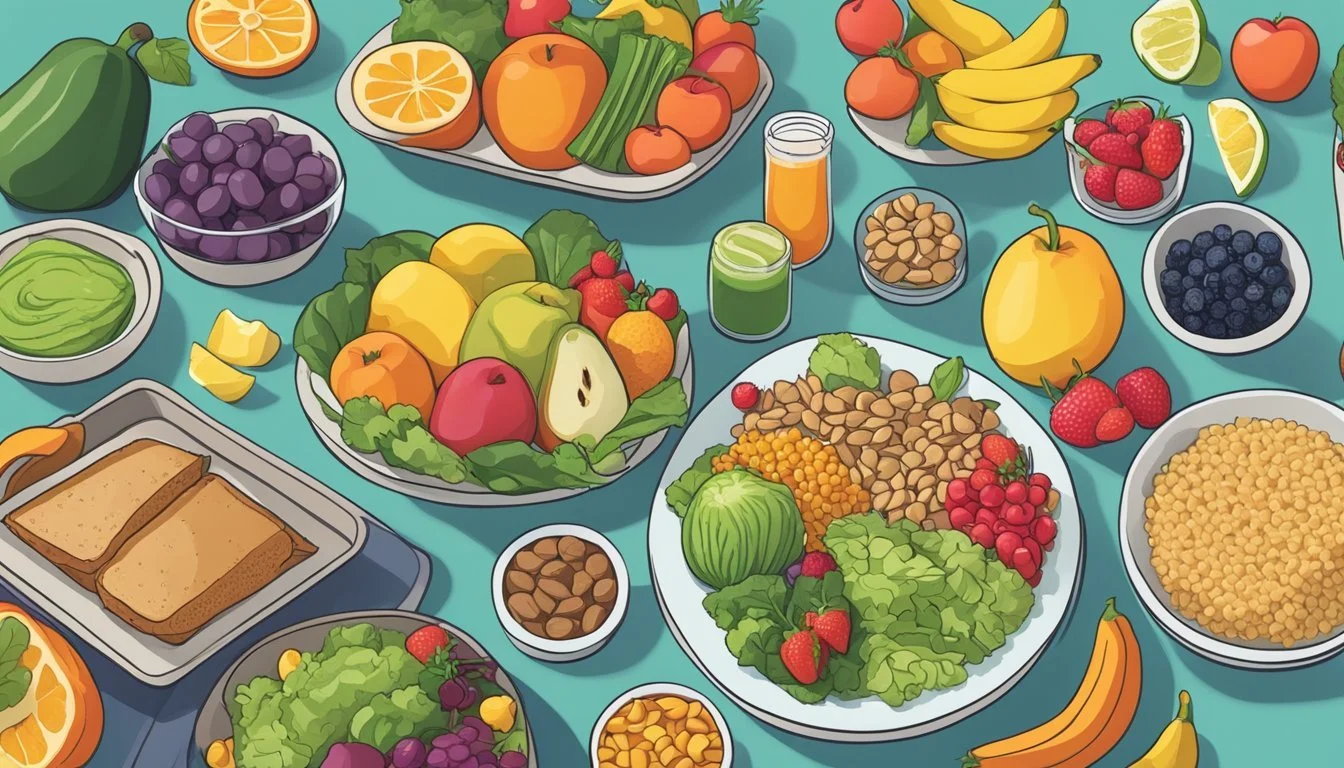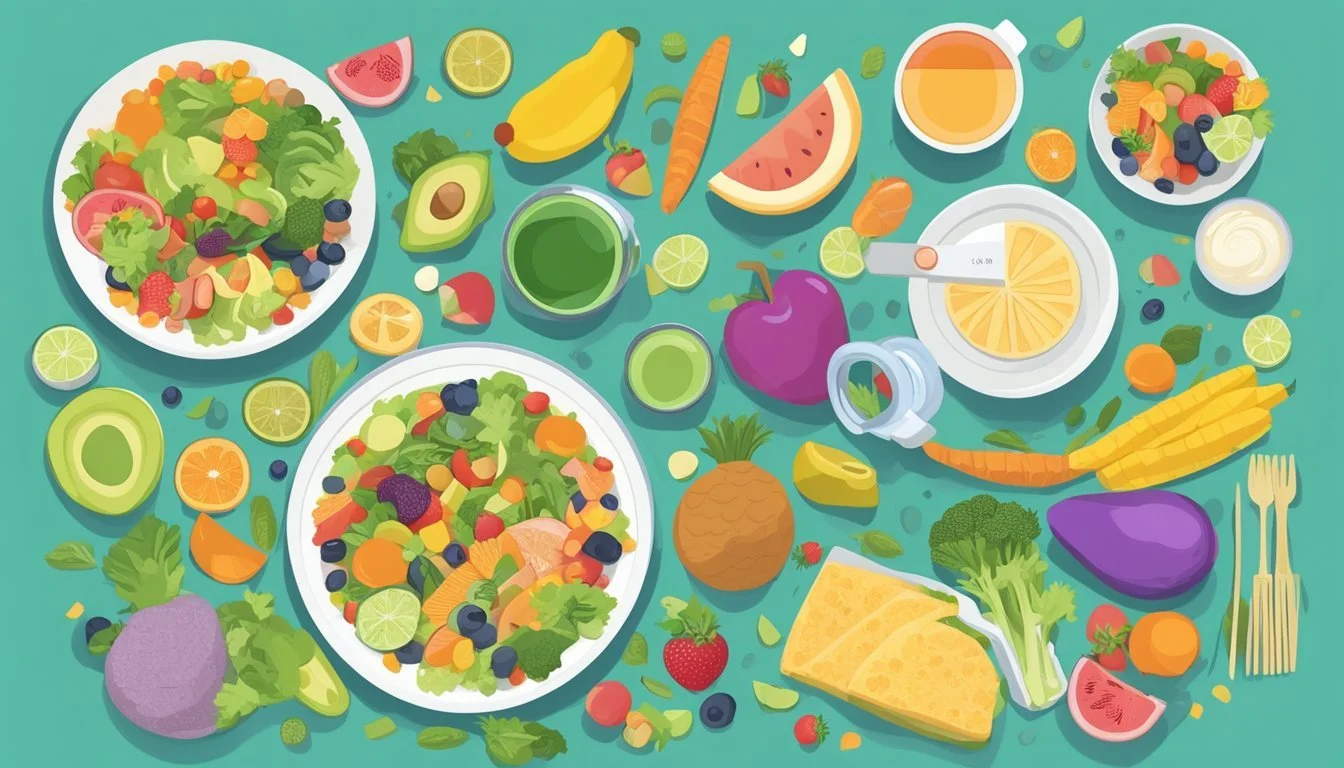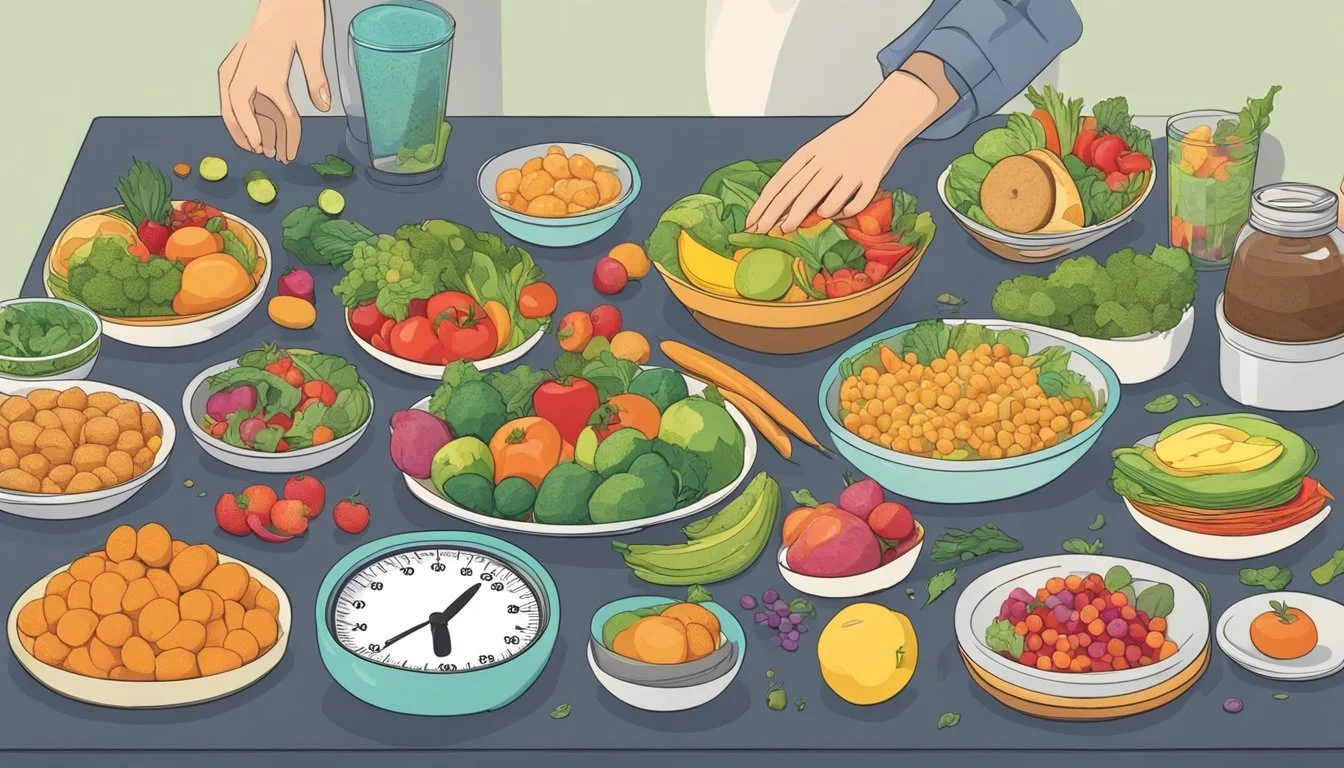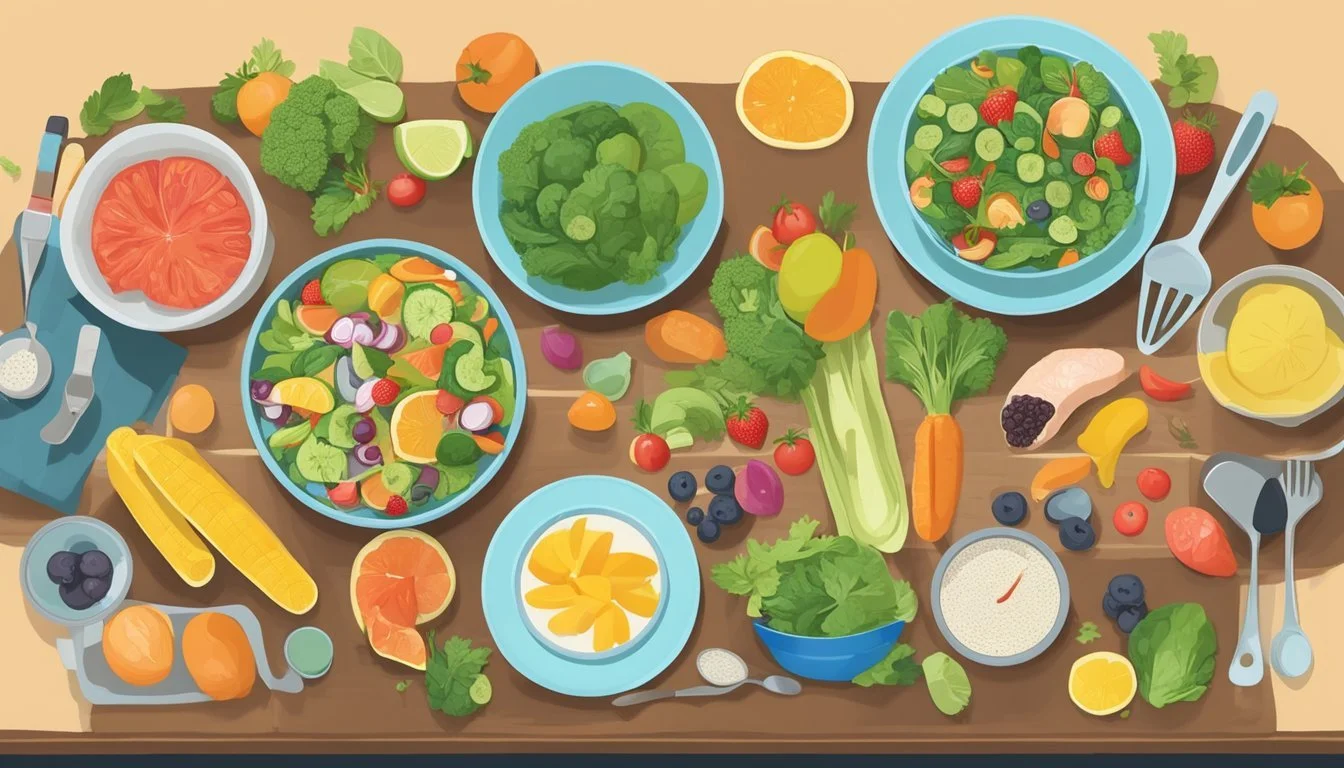The Truth About the Volumetrics Diet
Evaluating the More-Is-Less Approach to Weight Loss
The Volumetrics diet, pioneered by nutritionist Dr. Barbara Rolls at Penn State University, challenges conventional weight-loss strategies by shifting the focus away from caloric content to the volume of food. The premise is simple: by eating larger quantities of low-calorie, nutrient-dense foods, one experiences greater satiety, which may in turn reduce overall caloric intake and promote weight loss. This approach encourages consumption of foods that contain more water, air, or fiber, which have fewer calories per gram compared to high-fat, sugary foods.
Critics of typical diet plans often point to the psychological hardship and sustainability issues associated with calorie restriction. The Volumetrics diet responds to this criticism with its less rigid, more sustainable eating philosophy. Dr. Rolls, who holds a doctoral degree in nutrition and is an established author, suggests that feeling full plays a crucial role in how satisfied we are with our meals and, ultimately, in the success of any long-term weight management program.
Without barring any particular food group, the diet categorizes foods into four groups, emphasizing those in the lowest energy density category, such as fruits and vegetables, and limiting those in the highest. This categorization promotes a flexible dietary pattern that enables adherence without the common sense of deprivation. By focusing on the psychological aspects of eating and a holistic lifestyle change, the Volumetrics diet presents a method that could feasibly be adopted as a long-term solution for weight management.
Fundamentals of the Volumetrics Diet
The Volumetrics Diet emphasizes eating foods low in energy density to achieve weight loss without deprivation, focusing on satiety and nutrition.
Understanding Energy Density
Energy density is defined as the number of calories per gram of food. Foods with high energy density, like fried foods (What wine goes well with fried foods?) and desserts, have a lot of calories in a small amount of food, whereas foods with low energy density, such as fruits and vegetables, provide fewer calories but a larger volume.
Low-Energy-Density Foods: Typically high in water, fiber, or air, which contribute to a feeling of fullness. Examples include:
Fruits: apples, berries, oranges
Vegetables: leafy greens, carrots, bell peppers
High-Energy-Density Foods: Generally contain more fat and less water, offering less volume but more calories. Examples include:
Cheese, nuts, chocolate
Principles of the Volumetrics Approach
The Volumetrics Diet encourages individuals to consume primarily foods that are low in energy density and high in nutrients. By doing so, one can eat a larger volume of food while ingesting fewer calories, potentially leading to weight loss.
Macronutrients Balance:
Proteins: Should come from lean sources to keep energy density in check, such as chicken breast, tofu, or fish.
Fats: Should be consumed in moderation due to high energy density, focusing on healthy fats found in avocados or olive oil.
Carbohydrates: Should be complex and fiber-rich, like whole grains and legumes, providing fullness and energy.
In this dietary approach, individuals are not required to eliminate any food group, but are guided to make choices that are satiating, nutrient-dense, and lower in calories. It prioritizes the volume and nutritional content of meals rather than purely the calorie content.
Benefits of the Volumetrics Diet
The Volumetrics Diet emphasizes eating more food volume-wise while consuming fewer calories, which not only facilitates weight loss but also supports an overall healthier lifestyle. Its focus is on nutrient-dense foods that contribute to a feeling of fullness and provide essential vitamins and minerals.
Weight Loss and Satiety
The cornerstone of the Volumetrics Diet is the concept that one can lose weight by eating larger portions of low-calorie, high-volume foods that help you feel full for longer periods. This approach encourages a calorie deficit without the need to endure hunger. Research suggests that people adhering to this diet don't feel deprived because they can eat satisfying portions while still losing weight.
Key Components for Satiety:
High in water content – such as fruits and vegetables
Rich in fiber – which increases digestion time
Lean proteins
Whole grains
Health Benefits Beyond Weight Loss
The Volumetrics Diet extends its benefits beyond mere weight loss. It prioritizes healthy eating patterns that are sustainable in the long-term. High intakes of fruits and vegetables ensure that the body gets a broad spectrum of vitamins, minerals, and other nutrients required for proper bodily functions.
Health Benefits Include:
Improved cardiovascular health
Enhanced blood sugar control
Better digestive health
Each aspect of the diet is designed to contribute not just to weight management, but to overall well-being, aligning with guidelines set forth by health experts for a balanced, nutrient-rich diet.
What to Eat on the Volumetrics Diet
The Volumetrics diet encourages eating foods with a low energy density to promote fullness and weight loss while avoiding high-energy-density foods that are calorie-dense.
Recommended Foods
On the Volumetrics diet, individuals are advised to focus on foods that have high water content, which typically leads to lower calorie content. These foods help create a sense of fullness, potentially leading to weight loss due to reduced calorie intake.
Fruits and Vegetables: Emphasis on consuming a variety of fruits and vegetables, including non-starchy vegetables such as leafy greens, cucumbers, and tomatoes, due to their high water and fiber content.
Whole Grains: Incorporation of whole grains like brown rice, barley, and whole-wheat pasta, which provide more fiber and nutrients compared to refined grains.
Lean Proteins: Including lean sources of protein such as poultry, fish, tofu, and legumes, which offer essential nutrients without excessive calories.
Broth-Based Soups: Opting for soups that are based on broth rather than cream, which can be satisfying but low in calories.
Legumes: Adding beans, lentils, and chickpeas to meals for their protein content and ability to satiate hunger with fewer calories.
Healthy Fats: Incorporation of modest amounts of healthy fats found in foods like avocados, nuts, and seeds, providing essential fatty acids and enhancing meal satisfaction.
Water: Drinking water is essential on this diet, either consumed directly or through foods like fruits and broth-based soups, helping with hydration and fullness.
Foods to Limit or Avoid
Certain foods are more calorie-dense and provide less nutritional value per calorie, making them less favorable on the Volumetrics diet.
Processed Foods: Minimizing intake of processed snacks, ready meals, and other items typically high in sugar and fat.
Sugar: Reducing consumption of sugary drinks, candies, and desserts that are high in calories but low in nutrients and satiety.
Fast Food: Limiting fast food, which is often energy-dense and high in unhealthy fats, salt, and calories.
High-Calorie Foods: Avoiding foods that have high energy density, such as those containing significant amounts of sugar or fat, as they contribute to calorie intake without providing lasting fullness.
Sample Meal Plans and Recipes
The Volumetrics Diet focuses on eating foods with a low energy density, which allows one to eat large quantities, feel full, yet still lose weight. The diet encourages consuming meals high in water and fiber content, such as soups and salads, and incorporating lean proteins into each meal.
Creating Satisfying Meals
To build satisfying meals on the Volumetrics Diet, one typically includes a variety of healthy foods that are high in fiber and water but low in calories. Here’s a breakdown of what might be on a Volumetrics meal plan:
Breakfast: A bowl of oatmeal prepared with water or skim milk, topped with fresh berries and a tablespoon of chopped nuts.
Lunch: A large salad made with leafy greens, various vegetables, chickpeas, and grilled chicken breast, dressed with a vinaigrette.
Dinner: Baked salmon with a serving of quinoa and steamed asparagus.
Snacks: Sliced cucumbers, baby carrots, or an apple.
Here is an example of a simple, low-energy-dense soup recipe:
Hearty Vegetable Soup
Ingredients:
2 cups of vegetable broth
1 cup of diced tomatoes
1 cup of chopped carrots
1 cup of broccoli florets
1 cup of spinach
1/2 cup of chopped onions
2 cloves of garlic, minced
Herbs and spices to taste (e.g., basil, oregano, pepper)
Instructions:
In a large pot, sauté onions and garlic until softened.
Add the vegetable broth, tomatoes, carrots, and broccoli to the pot.
Bring to a boil, then simmer until vegetables are tender.
Stir in the spinach and cook until wilted.
Season with herbs and spices to taste.
Serve hot.
One of the keys to feeling full on the Volumetrics Diet is to emphasize the quantity of food rather than the calorie count, by opting for nutrient-dense ingredients over high-calorie options. This method allows for a more flexible and sustainable approach to weight loss, as it doesn't require strict calorie counting or small, unsatisfying meals.
Exercise and the Volumetrics Diet
While the Volumetrics Diet primarily focuses on the types and volumes of food consumed to achieve weight loss, incorporating exercise can enhance its effectiveness. Exercise is a crucial component of any weight management plan because it contributes to caloric expenditure and supports a healthy metabolism.
Cardiovascular Exercises: These exercises are key for burning calories, which can create a greater caloric deficit when combined with the Volumetrics diet. They include:
Walking
Jogging
Swimming
Cycling
A moderate intensity of 150 minutes per week is recommended for general health benefits, but they may want to increase intensity or duration to aid in weight loss.
Strength Training: Building muscle through strength exercises helps in increasing resting metabolic rate, meaning more calories are burned at rest. Strength training should ideally be performed at least twice a week and can include:
Weightlifting
Resistance band exercises
Bodyweight exercises like push-ups and squats
Flexibility and Balance: Although not directly impacting calorie burn, these exercises enhance overall physical function, allowing for more efficient and safe movement during cardio and strength workouts. Examples include:
Yoga
Pilates
Stretching routines
Individuals following the Volumetrics diet should aim to integrate exercise into their routine gradually, listening to their body's cues to prevent overexertion. It is important to remember that while the Volumetrics Diet does not specifically outline an exercise regimen, combining it with regular physical activity can lead to improved results and overall health.
Perspectives on the Volumetrics Diet
The Volumetrics Diet focuses on eating foods with a low energy density to promote weight loss and maintain a healthy lifestyle.
Pros and Cons
Pros:
Sustainable Weight Loss: Experts suggest its emphasis on high-volume, low-calorie foods can lead to sustained weight management without the feeling of deprivation.
No Forbidden Foods: Unlike many fad diets, the diet allows all types of foods, which can help avoid feelings of restriction and subsequent binge eating.
Focus on Nutrients: It encourages the consumption of nutrient-dense foods like fruits and vegetables, which are vital for long-term health.
Cons:
Possible Nutrient Imbalances: Solely focusing on food volume might lead to inadequate intake of healthy fats and proteins.
Time-Consuming: Requires significant time to plan and prepare meals, which could be challenging for people with busy lifestyles.
Lack of Structure: Some individuals may need more defined eating plans to adhere to a diet successfully.
Comparisons to Other Diets
When registered dietitians compare the Volumetrics Diet to other weight loss strategies, they often emphasize its potential for long-term adherence rather than short-term success. Unlike many fad diets, which may offer rapid weight loss, the Volumetrics Diet does not severely limit caloric intake or food variety, reducing the chances of yo-yo dieting.
Diet Plan Focus Long-Term Feasibility Registered Dietitian Viewpoint Volumetrics Low energy-density foods High Generally positive for its balanced and flexible approach Keto Low carbohydrate, high fat Moderate Concerns over nutrient diversity and sustainability Intermittent Fasting Eating within specific time frames Moderate Mixed; can be effective but may not be suitable for all
By comparing these attributes, it becomes clear that the Volumetrics Diet is designed with a long-term, healthy lifestyle in mind rather than short-term, drastic weight loss.
Practical Considerations
When adopting the Volumetrics diet, individuals must consider their approach to grocery shopping and dining out, as these significantly influence diet success. Proper meal planning and mindful portion sizes are essential to adhere to this lifestyle.
Grocery Shopping Tips
One embarks on grocery shopping with a clear list that emphasizes fruits, vegetables, soups, and salads, which are staples of the Volumetrics diet due to their low energy density. These foods allow one to eat larger portions for fewer calories. Individuals should prioritize:
Fruits and Vegetables: Fresh or frozen without added sugars or fats.
Whole Grains: Such as brown rice and whole-wheat pasta for fiber-rich choices.
Lean Proteins: Including fish, poultry, and legumes to maintain satiety.
Soups and Broths: Especially those that are vegetable-based and low in sodium.
Meal planning can assist in making grocery shopping more efficient, ensuring variety and preventing impulse purchases that may not align with the diet's principles.
Eating Out
Navigating restaurant menus while following the Volumetrics diet requires a discerning eye for portion sizes and food choices. Key strategies include:
Appetizers: Opting for a broth-based soup or a salad with dressing on the side can fill one up with lower density options before the main course.
Main Dishes: Choosing entrees that are rich in vegetables and lean proteins, and asking how the food is prepared can help maintain adherence to the diet.
Portion Control: Requesting half-portions or a to-go box upon arrival allows one to eat a more appropriate amount and avoid overeating.
Overall, when dining out, it is crucial to be proactive about inquiries and considerate of one's dietary goals— balancing enjoyment with the principles of the Volumetrics diet.
Challenges and Solutions
Embarking on the Volumetrics diet involves understanding its intricacies and learning how to navigate through potential hurdles. Successful adherence can lead to weight loss by focusing on satiety through high-volume, low-calorie foods while dealing with cravings and managing portions effectively.
Managing Cravings and Portions
Individuals may find that their cravings for high-energy-density foods persist when they start the Volumetrics diet. To address this:
Identify Triggers: Understanding what triggers cravings can be crucial. Sweets after dinner? Salty snacks during a movie? Once triggers are identified, they can strategize to avoid or confront them.
Healthy Alternatives: She can prepare healthier substitutes that are also satisfying. For sweets, a bowl of mixed berries; for salty snacks, air-popped popcorn without added butter.
Portion control is vital as even healthy foods can lead to weight gain if eaten in large quantities. To maintain proper portion sizes:
Visual Cues: Using smaller plates can make portions look larger. She should fill half her plate with vegetables, a quarter with lean proteins, and a quarter with whole grains.
Regular Meals: Consuming regular meals throughout the day can prevent overeating.
Adapting the Diet to Special Needs
When dietary restrictions limit food choices, the Volumetrics diet can be adapted:
Dietary Restrictions: For those with dietary restrictions, focusing on the allowed foods within each category is key. She may need to ensure that the alternative foods contain the right macronutrient balance to maintain energy levels.
Professional Advice: Consulting a dietitian can be beneficial. He or she can provide tailored advice that aligns with personal health requirements.
By considering the balance of macronutrients and adhering to dietary restrictions, she can modify the Volumetrics diet to fit her unique needs while still emphasizing volume and satiety.
The Future of the Volumetrics Diet
The ongoing research into the Volumetrics diet points toward continual adaptations, aligned with health trends and a focus on long-term sustainability.
Research and Developments
Researchers are increasingly scrutinizing the principles of the Volumetrics diet to ascertain its long-term sustainability. The diet's essence lies in its focus on low-energy-density foods, which supports both weight management and overall health. Recent studies have emphasized the importance of satiety, the feeling of fullness, which is a cornerstone of the Volumetrics approach. Investigations are also being conducted to see how this diet fits into the dynamic landscape of dietary health trends.
Nutritional scientists continue to explore the psychological and physiological impacts of consuming larger volumes of food with lower caloric density. Research often suggests that diets like Volumetrics can be more sustainable than restrictive diets because they don't necessitate drastic changes and are less likely to lead to feelings of deprivation.
The diet's adaptability to individual preferences and regional food availability might contribute to its future appeal. There is an ongoing effort to integrate the principles of the Volumetrics diet into health recommendations that address a variety of dietary needs and cultural cuisines, aiming for both sustainable practices and health trends.
As long-term health becomes a more prominent goal in nutrition science, the Volumetrics diet may become a template for developing eating patterns that promote satiety, nutrient density, and weight control. It could serve as an example of a diet that balances the enjoyment of eating with the necessity of maintaining a healthy calorie intake.
User Experiences and Testimonials
Individuals who have adopted the Volumetrics diet share varied experiences, with many reporting satisfactory weight loss outcomes. Users consistently highlight the benefit of not feeling deprived—a sensation often linked with other restrictive diets. They emphasize the psychological satisfaction that comes from eating larger volumes of low-calorie, nutrient-rich foods.
Success Stories: There are accounts of individuals who have successfully managed to shed pounds while feeling full and satisfied. They attribute their success to the diet's emphasis on high-volume, low-calorie foods such as fruits, vegetables, and broths.
Personal Experiences: Those who adhere to the Volumetrics approach generally find it flexible and adaptable to their daily routines. Unlike diet plans that rely on strict calorie counts, users appreciate the diet's straightforward categories of food density.
Weight Loss: While individual results vary, testimonials often reflect a gradual but steady weight loss. Diet followers appreciate that the Volumetrics diet aims for a sustainable lifestyle change rather than a quick-fix solution.
Positive Feedback:
Increased fullness feelings after meals
Enjoyment of a wide variety of allowed foods
Avoidance of the typical "dieting" mentality
Challenges Noted:
Requirement for more frequent meal preparation
Adaptation period to understand food density categories
The reported experiences suggest that the Volumetrics diet can be an effective method for losing weight without compromising on food intake volume, aligning with its foundations in satiety and psychological satisfaction.
Professional Insights
The insights provided in this section reflect the perspectives of dietitians and healthcare providers on the Volumetrics diet, addressing its nutritional adequacy and effectiveness for weight loss.
Dietitian's Analysis
Dietitians affirm that the Volumetrics diet emphasizes the consumption of foods with low-energy density, such as fruits and vegetables, which can lead to a feeling of fullness on fewer calories. They highlight that by focusing on the volume of food rather than calorie count alone, individuals may feel satiated while still achieving a caloric deficit. This approach aligns with nutritional advice that encourages a balanced diet abundant in nutrient-dense foods.
Pros:
Encourages the intake of high-fiber, water-rich foods.
No strict food restrictions, promoting dietary variety.
Cons:
May require more time for meal preparation.
Portion size may not always equate to nutritional quality.
Healthcare Provider Recommendations
Healthcare providers typically recommend diets that are sustainable and support long-term health. They often suggest the Volumetrics diet as it can be adaptable and encourages healthy eating patterns without strict prohibitions. However, they caution that individuals with specific health conditions should consult a healthcare professional before making significant dietary changes.
Guidelines:
Tailor the diet to individual health needs.
Consider incorporating regular physical activity.
Considerations:
Monitor overall nutritional balance to ensure all micronutrient needs are met.
Evaluate the individual's relationship with food to prevent overeating.
Conclusion
The Volumetrics diet emphasizes a high intake of low-calorie, nutrient-dense foods, offering an atypical approach to weight management. Prospective dieters can appreciate the diet's principle of consuming larger volumes of food, which can lead to a feeling of fullness and satisfaction without a high caloric intake.
Key Points:
Foods are categorized based on their energy density.
Dieters are encouraged to eat more fruits, vegetables, and soups.
The diet does not forbid any particular food groups.
By prioritizing foods with low energy density, individuals can create a daily meal plan that allows for substantial portions while controlling calories. This approach can empower dieters with a comprehensive understanding of how to make healthier food choices without feeling restricted.
Diet Considerations:
No foods are off-limits, fostering a flexible eating pattern.
Focus is on long-term, sustainable weight loss rather than quick fixes.
It is essential to maintain balance and ensure nutritional needs are met.
Individuals should still apply caution and strive for nutritional balance, as the unrestricted nature of the diet could lead to insufficient intake of certain macronutrients if not properly managed. The Volumetrics diet is structured to aid individuals in making informed decisions about their eating habits, potentially leading to weight loss and improved health, provided it is adapted to fit individual nutritional requirements.









